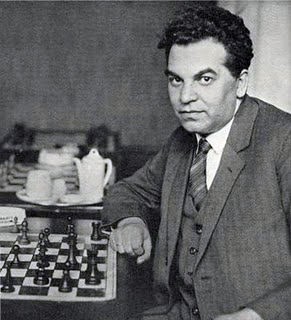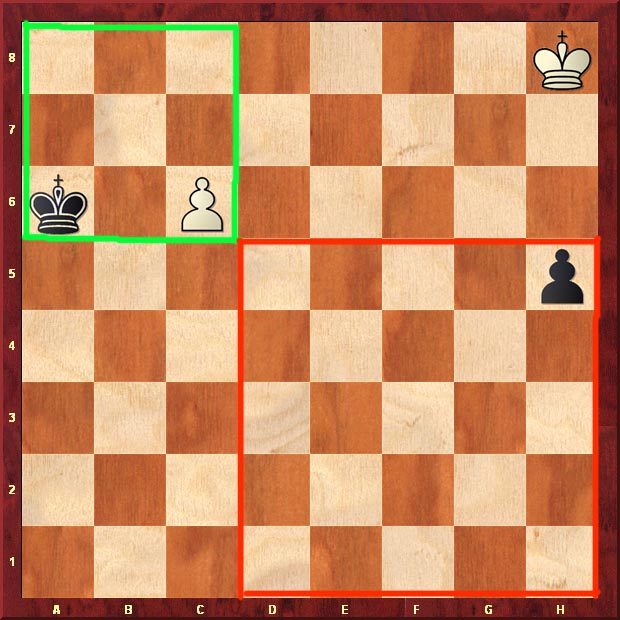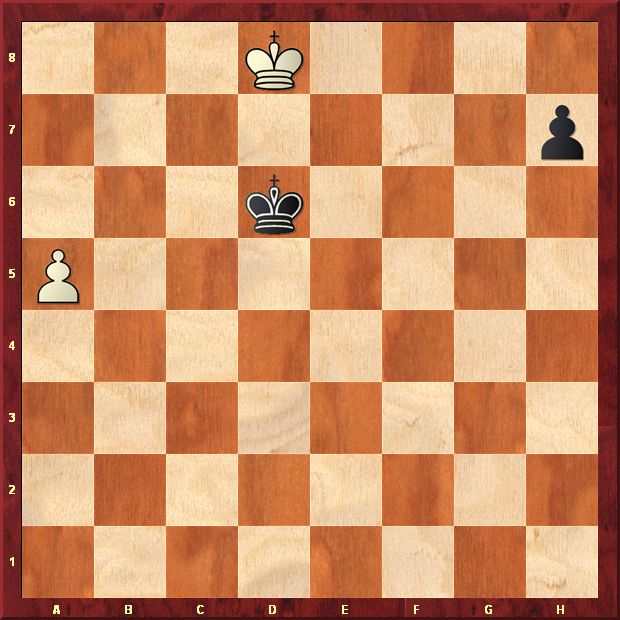A chessboard is a square, divided into 64 black and white squares. But there are more squares in chess, mostly invisible, as part of an amazing chess geometry hidden in chess players' minds. 
One classic square is often used in pawn endgames when a king is chasing the enemy's passed pawn. The king doesn't have to walk in horizontal or vertical lines, he can run diagonally or zig-zag across the field. But he needs to be close enough to catch the pawn. How close?
The king has to walk into a square whose one side is defined as the distance between the pawn and its promoting square at the edge of the board.
We can use a famous study by Richard Reti as an example. The world-class player, creative chess composer and prolific writer published his amazing work in Ostrauer Morgenzeitung on December 4, 1921.
Richard Reti

White draws
While the black king is in the (green) square and can snap up the white c-pawn anytime, the white king is out of the (red) square, unable to catch the black h-pawn. Reti makes the study work, blending both green and red squares into a beautiful solution. Can you find how white draws?
SOLUTION:
1.Kg7! (The king has to climb up diagonally to reach one of the two squares.) 1...h4 2.Kf6! Kb6 3.Ke5! (The diagonal journey is successful. The white king can either help his own pawn or catch the black one.) 3...h3 (After 3...Kxc6 4.Kf4 draws.) 4.Kd6 h2 5.c7 h1Q 6.c8Q draw.
Note that in the replay windows below you can click on the notation to follow the game.
Other composers tried to expand on Reti's maneuver. Ladislav Prokes juggles the squares differently. The black pawn is far out of reach, but the white king, momentarily pinned to the edge of the board, finds a miraculous way to stop it.
Ladislav Prokes

White draws
SOLUTION:
(With the first three moves, white threatens to advance his a-pawn, forcing black to react.) 1.Kc8! (After 1.a6? Kc6 2.Ke7 h5 black wins.) 1...Kc6 2.Kb8! (After 2.a6? Kb6 3.Kd7 h5 black wins.) 2...Kb5 3.Kb7! Kxa5 4.Kc6 (As in Reti's study, the diagonal walk saves the game.) 4...h5 5.Kd5 the white king is in the square and catches the black pawn. Draw.
Note that in the replay windows below you can click on the notation to follow the game.
Henri Rinck composed his version in 1922 and published it in the Revue Suisse d'Echecs in Basel. He also worked with squares, but added a line-geometry, the skewer, into the solution.
Henri Rinck

White wins
SOLUTION:
1.a4 Kb3 2.a5 Kc3 (2...Kc4 after this move, white uses the skewer to win: 3.a6 Kd3 4.a7 f2 5.a8Q f1Q 6.Qa6+ winning the black queen.) 3.Kg1! (The only move. After either 3.Kg3? Kd4 4.a6 Ke3 5.a7 f2 6.Kg2 Ke2; or 3.a6? Kd2 4.a7 f2 5.Kg2 Ke2 black draws.) 3...Kd4 4.a6 Ke3 5.Kf1! (The black pawn is stopped and the white pawn queens.) 1-0
Note that in the replay windows below you can click on the notation to follow the game.
